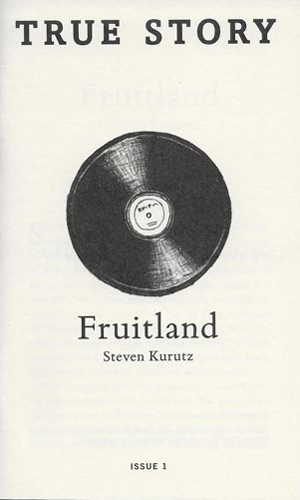True Story – October 2016
If I’m being honest, what drew me in to the first issue of True Story, brought to you by the editors of Creative Nonfiction and In Fact Books, is that the inaugural story, “Fruitland” by Steven Kurutz, sounded intriguing, mysterious, and—well—like a fiction story I’d like to read. Two brothers, Donnie and Joe Emerson, recorded an album together in the late 70s. While a flop at the time, it was rediscovered by chance in 2008, catapulting them into belated fame and inevitably stirring up ghosts. As a true story, “Fruitland” ends up offering more to readers than a fictionalized “inspired by” story ever could.
If I’m being honest, what drew me in to the first issue of True Story, brought to you by the editors of Creative Nonfiction and In Fact Books, is that the inaugural story, “Fruitland” by Steven Kurutz, sounded intriguing, mysterious, and—well—like a fiction story I’d like to read. Two brothers, Donnie and Joe Emerson, recorded an album together in the late 70s. While a flop at the time, it was rediscovered by chance in 2008, catapulting them into belated fame and inevitably stirring up ghosts. As a true story, “Fruitland” ends up offering more to readers than a fictionalized “inspired by” story ever could.
Opening the piece, Kurutz paints a picture of the Emerson brothers’ album Dreamin’ Wild, beginning with the cover art which features the brothers in Elvis-esque glittery jumpsuits and feathery hair. Kurutz goes on to talk about the hits found on the album, including “Baby,” what he calls “the standout track.” At this point, I couldn’t resist rushing to YouTube to find the album, allowing it to play in the background as I read, a built-in soundtrack.
After giving us background information, Kurutz introduces us to the brothers as he meets them himself: first selfless, gentle Joe who still carries warm feelings toward his younger brother and the time spent recording together, and Donnie, the wilder of the two, who is prone to dark mood swings and has since moved away from the family home in Fruitland, Washington. Once we’re familiar with the brothers, Kurutz introduces us to the ghosts they carry with them.
“Fruitland” isn’t just the story of the brothers, though. It’s also part homage to the brothers’ hometown, a town untouched by time:
We used to sit out on the porch swing after supper, and the air was so heavy and still, you could hear a car coming half a mile off. Fruitland had that same elemental, out-of-time quality. I hadn’t thought about that part of my life in years. Fruitland made me realize how much I missed it.
Something about that place—and really, I mean the Emersons—rewired your jaded heart, put you back in touch with basic goodness.
Kurutz cites a documentary about the brothers by Matt Sullivan several times throughout the issue, but his own writing becomes a vivid, written documentary itself. He describes the members of the Emerson family and Fruitland so thoroughly, it’s like we’re there walking around the town or in the living room with them.
“Fruitland” is a great kick-off point for a new publication, a perfect read for music and nonfiction fans alike. With its inaugural issue, single-narrative True Story proves that truth is not only stranger than fiction, it’s often a lot more interesting too.
[www.creativenonfiction.org/true-story]





